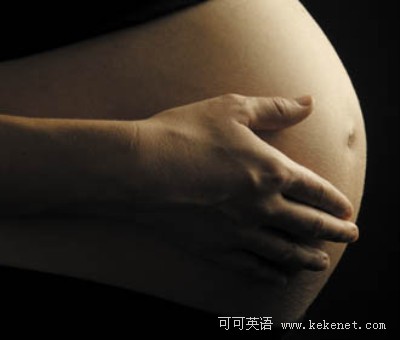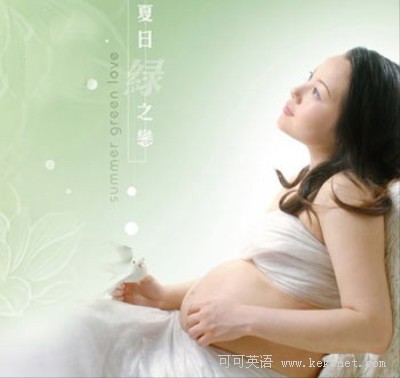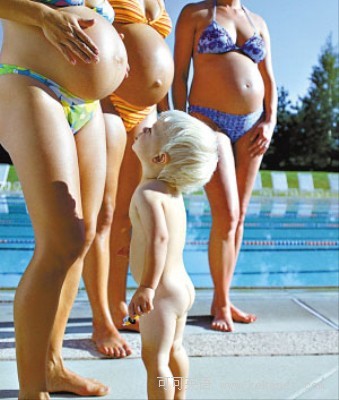(单词翻译:单击)
【英文原文1】
With her due date approaching and her unborn son pointed feet first, Fiona Simmonds tried every technique she knew of -- acupuncture, raising her pelvis above her head and playing music near her belly -- to encourage the baby to flip around and allow him be delivered normally. But in the end, the baby remained breech and she needed a caesarean section.
Today, about a third of U.S. births are done by caesarean section, up from 21% in 1998, one of the highest of any developed country, the National Center for Health Statistics reported in March. Public-health officials are concerned about the rising rate because c-sections hold more health risks for the mother -- including possible infection and blood loss -- and are more expensive than a vaginal birth.
Medical experts say many c-sections -- which involve delivering a baby through a surgical incision -- are performed unnecessarily. But for a growing number of women, a c-section is the safer option for delivering a baby, and in some emergency cases, it might be the only choice. Medical experts say they're now seeing more medically-necessary c-sections as women have children later in life and obesity rates rise.
'We're seeing more obese women and that leads to more' caesareans because they are more likely to have other medical conditions that can lead to complications during childbirth, such as diabetes and high blood pressure, says Jacques Moritz, director of gynecology at St. Luke's-Roosevelt Hospital Center in New York.
Moms with diabetes tend to have larger babies that can get stuck in the birth canal and obesity can make it more difficult to monitor the baby during delivery. Older moms are more likely to experience complications during pregnancy such as gestational diabetes and preeclampsia (a condition characterized by high-blood pressure during pregnancy), which can boost the risk of a c-section. And the increased use of fertility treatments including in-vitro fertilization, which can result in multiple births, also can make a c-section necessary, Dr. Moritz says.
【英文原文2】
When a baby weighs more than 10 pounds, a c-section is often the safer option. Dr. Moritz also chooses a c-section when the mother has been in labor for a long period and not able to deliver. A long labor could signal that the baby is having trouble fitting through the mom's pelvis. A caesarean also is necessary for twins whose heads are not pointed down and anytime there are triplets, he says. And c-sections are often ordered when a baby's heart rate goes down during labor.
The number of c-sections performed in the U.S. each year for medical reasons isn't counted. But the World Health Organization has said that when c-sections rates go above 15% of total births, that usually indicates too many are being done.
The rise in caesarean sections hasn't resulted in fewer delivery complications or healthier moms and babies, says George A. Macones, chairman of obstetrics and gynecology at Washington University in St. Louis and a spokesman for the American College of Obstetricians and Gynecologists.
Women who deliver a baby by caesarean section face a number of medical risks, including the possibility of infection, blood loss, pulmonary embolism and death.
The risks are magnified after a first child is delivered by c-section: In subsequent pregnancies, there's an increased likelihood that the uterus could rupture. Second and third c-sections also have higher risks of excessive bleeding that could necessitate a hysterectomy.
Vaginal deliveries, of course, carry their own risks, the most common of which are pain and trauma to the pelvic floor, which can sometimes result in incontinence. But they are generally safer than c-sections, Dr. Meyer says. And there are also health benefits for babies: Passing through the birth canal helps prepare the lungs for breathing air.
But doctors say that a c-section is indicated if a normal delivery would be risky for baby or mom. When Mrs. Simmonds baby failed to move out of the breech position, she scheduled a caesarean.
【中文译文1】
随着预产期的临近、腹中男宝宝的胎位是头上脚下,菲奥纳•西蒙斯(Fiona Simmonds)尝试了自己知道的各种方法──针灸、膝胸卧式运动、在肚子旁边播放音乐──来试图让胎儿翻转过来,让自己可以自然生产。不过最后,胎位依然是臀位,她需要进行剖腹产了。
Bryan Derballa
菲奥纳•西蒙斯上个月做了剖腹产,因为宝宝的胎位是臀位据美国国家卫生统计中心(National Center for Health Statistics)3月份公布的数据,目前,美国的剖腹产率约为三分之一,较1998年的21%有所上升,成为发达国家中剖腹产率最高的国家之一。公共卫生官员对上升的剖腹产率表示担心,因为剖腹产会给产妇的健康带来更多的风险──包括可能发生感染和失血,而且比自然生产的费用要高。
医学专家说,很多剖腹产都是不必要的。不过对于越来越多的女性来说,剖腹产是一个更安全的选择,在某些紧急境况下,还有可能是唯一的选择。医学专家说,随着高龄产妇的增多和肥胖率的上升,他们认为从医学上讲进行更多的剖腹产是必要的。
纽约圣卢克─罗斯福医院(St. Luke's-Roosevelt Hospital Center)妇科主任莫瑞兹(Jacques Moritz)说,肥胖的女性越来越多,由于她们更有可能患上糖尿病和高血压等其他易导致生产并发症的疾病,剖腹产也随之增多了。
患有糖尿病的准妈妈更容易生下巨大儿,太大的宝宝有可能会卡在产道中,而肥胖则可能增大生产期间对胎儿的监护难度。高龄产妇在怀孕期间更有可能出现并发症,比如妊娠糖尿病和妊娠高血压,进而可能会增大剖腹产的风险。莫瑞兹说,不孕症治疗的增多──包括试管婴儿──有可能会导致多胎,进而必须进行剖腹产。
【中文译文2】
当胎儿体重超过10磅时,剖腹产往往是更安全的选择。莫瑞兹还会在产程过长的时候使用剖腹产。产程长有可能意味着胎儿难以进入母亲的骨盆。他说,胎位不正的双胞胎也需要进行剖腹产,所有的三胞胎都要进行剖腹产。当生产过程中胎儿的心率减慢时,也常常会进行剖腹产。
美国每年因医学原因而进行的剖腹产数量没有进行过统计。不过,世界卫生组织(WHO)说,当剖腹产率超过了总数的15%以上时,往往意味着剖腹产做的太多了。
圣路易斯的华盛顿大学妇产科主任、美国妇产科医生协会(American College of Obstetricians and Gynecologists)发言人马肯斯(George A. Macones)说,剖腹产的增多并没有使生产并发症减少或母婴更健康。
进行剖腹产的女性面临各种医学风险,包括感染、失血、肺部栓塞和死亡的可能。
如果头胎是剖腹产,之后上述风险会增大:在之后的怀孕中,子宫撕裂的风险会更大。第二次和第三次剖腹产还会有更高的大出血风险,有可能需要对产妇进行子宫切除。
当然,自然生产也有风险,最常见的是疼痛和对骨盆底的创伤,这有时候可能会导致小便失禁。不过梅耶说,通常来讲,自然生产比剖腹产更安全。自然生产对宝宝也是有好处的:经过产道生产可以帮助宝宝的肺部为呼吸做好准备。
不过,医生说,如果自然生产对胎儿或产妇可能有风险的话,建议进行剖腹产。当西蒙斯的胎位没有纠正过来时,她做了剖腹产。






